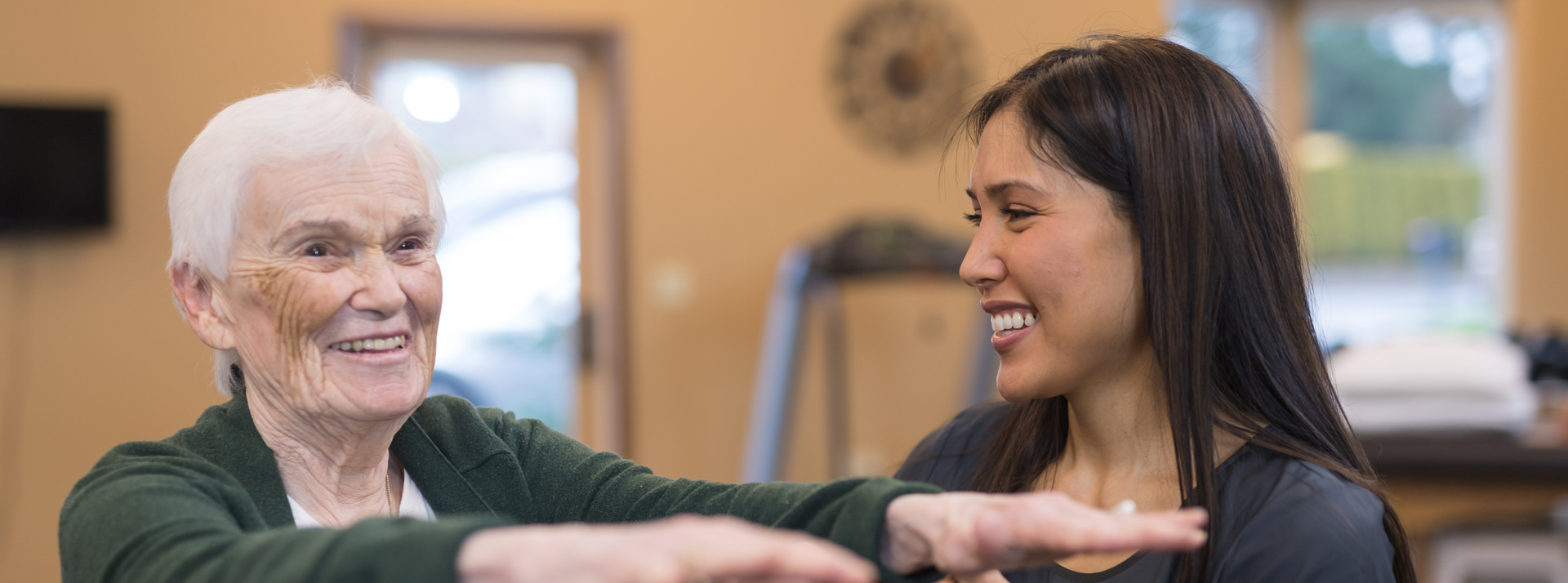Early Onset Parkinson's Disease
20% of people with Parkinson's disease are under 50 years of age.

Parkinson’s disease (PD) is a complex and progressive disorder characterized by both motor and non-motor symptoms. The prevalence of PD rises sharply with advancing age, with the mean age of onset in the early to mid-60’s. In 3-5% of cases though symptoms start much earlier, between 21 and 50 years of age. This is referred to as Early Onset Parkinson’s Disease (EOPD) and tends to have unique family and societal implications compared to those with late onset PD.
Parkinson’s disease is one of the most common progressive neurodegenerative
diseases in the world, second only to Alzheimer’s disease
Parkinson’s disease presents a significant health burden affecting over 150,000 Australians, 40,000 of them under the age of 50. Every year, another 1,100 people under the age of 65 are diagnosed with PD, with only 16% of those on the NDIS. With no known cure, physiotherapy plays a crucial role in maintaining movement, strength, and function for people with EOPD, and reducing the risk of falls and associated comorbidities.
What causes PD?
The exact cause of PD is still unknown. Genetic and environmental factors are known to be involved however the extent of each remains elusive. In EOPD, genetic factors are believed to play a greater role. What is known is that in PD, cells in an area of the brain known as the substantia nigra begin to die off. The substantia nigra (along with a couple of other areas in the brain) is responsible for the production of dopamine, a neurotransmitter which, when released into the space between neurons, allows nerve impulses to be propagated – essentially for information to move along nerves.
In the same area that dopamine is secreted (the synaptic cleft) there exists a protein called alpha-Synuclein (pronounced sigh-new-clay-in). The role of alpha-Synuclein is to control the release of neurotransmitters like dopamine. In PD, alpha-Synuclei becomes disrupted and tangled, forming what are known as Lewy Bodies. The result of both cell death in the substantia nigra AND the formation of Lewy bodies is suppression of dopamine release which affects movement, memory, mood, sleep, learning, concentration, and other body functions.
Risk factors for PD
Both environmental and genetic factors exist for PD. Genetic factors were first identified about 20 years ago, and this has opened a whole new world of possibilities for understanding, diagnosing, and treating PD, particularly EOPD. Environmental factors such as head injury and exposure to pesticides and heavy metals are identified risk factors.
Current science indicates that in most cases, genetic and environmental factors interact to cause Parkinson’s disease.
Diagnosing PD
Regardless of your age, diagnosis of PD remains largely clinically based on the presenting signs and symptoms. As symptoms appear gradually over time, it can be challenging to accurately diagnose PD in the early stages.
There are a range of symptoms that commonly present in PD. These are frequently grouped in ‘motor’ (such as tremor, rigidity, slowness of movement and difficulty initiating movement) and ‘non-motor’ (such as sleep disorders, pain, gastrointestinal problems, and sensory impairments).
In EOPD, some symptoms such as dystonia (involuntary contraction of muscles) and anxiety and depression are more common and present earlier. There is also a greater presence of Levodopa-induced dyskinesias (uncontrolled, involuntary movements) in EOPD for reasons that are not fully understood (Levodopa is a common medication used to manage Parkinson’s disease. Long term use of Levodopa can result in dyskinesia in all patients with PD, however it is more common in EOPD).
All these symptoms can impact physical and mental health, reduce quality of life, increase financial burden, and have profound social and family effects.
Management and treatment
There is strong evidence to support a multidisciplinary approach to the assessment, treatment, and management of EOPD. This will generally include a neurologist (who makes the primary clinical diagnosis of PD), a GP, Physiotherapist, Occupational Therapist, Speech Therapist and Psychologist.
Fortunately, EOPD tends to have a more benign disease progression, delayed onset of falls and longer survival
Levodopa and Carbidopa are the most common medications for pharmacological management though in EOPD their use may be delayed due to the potential side effects of longer-term use. Levodopa is converted to dopamine in the brain and assists in controlling movement, while Carbidopa prevents the breakdown of levodopa in the blood stream so that more levodopa can enter the brain.
Surgical intervention such as Deep Brain stimulation can be an option when pharmacological treatment is exhausted.
The role of Physiotherapy in EOPD
Physiotherapy plays a crucial role in in the management of EOPD, maintaining functional capacity across the lifespan, slowing symptom progression, reducing falls risk as symptoms progress, and improving self-confidence.
Recent studies have shown that people with PD spend 75% of waking hours sedentary. Persons with PD are 30% less likely to be active compared to healthy individuals, with only 18% undertaking regular low level physical activity and only 6% engaging in regular moderate to vigorous physical activity. If your lifestyle is already sedentary, undertaking small amounts of light to moderate intensity exercises such as walking, gardening, and stretching is a good start.
Early engagement with a physiotherapist will improve your understanding and management of PD, and assist in
developing key exercise and lifestyle habits to improve your health and wellbeing even with PD.
A wholistic approach will look beyond the PD diagnosis and take in the bigger picture. Regular physiotherapy and exercise progression and modification will help improve bone and joint health, look after muscle strains and joint pains, and keep your heart and lungs working at their best.
Exercise type and volume
Therapeutic exercise must be prescribed and individualised and incorporate strengthening (compound) exercises, aerobic exercise, and balance strategies. The goal should be to engage in 30-60mins of targeted exercise every day of varying type and intensity. Where possible programs should include some moderate and high intensity exercise, dependent on individual capacity and risk assessment.
Gym programs, walking, cycling and swimming can all be undertaken by people with PD, depending on your symptoms. Hydrotherapy, yoga and clinical pilates classes are appropriate and effective at different stages throughout the lifespan and have been shown to improve strength, balance and functional movement.
You can learn more about the role of physiotherapy-led therapeutic exercise for PD here.
Special Considerations for EOPD
People with EOPD are at a different stage of life and tend to have different family and societal responsibilities to those diagnosed later in life. Many patients will still have a job, be raising or wanting to raise a family, have active social lives, and be eager to travel and explore.
It is important that a multi-disciplinary approach considers the life stage and goals of the individual. Treatment and management must give consideration to employment status, finances, parenting and family responsibilities, and relationships. More information on these can be found at www. shakeitup.org.au.
The Take Home
Early Onset Parkinson’s disease is a challenging diagnosis that requires skilled, multi-disciplinary management. As a progressive neurological disease that affects dopamine production in the brain, EOPD will result in a range of motor and nonmotor symptoms. Physiotherapy and physiotherapy-directed exercise has been shown to improve health related quality of life for people with EOPD. By working closely with a physiotherapist across the lifespan, individuals with EOPD can delay symptom progression, improve functional capacity, mitigate falls risk and improve their independence, self-confidence and health related quality of life.
Do you have early onset Parkinson's disease and want to effectively manage your symptoms? Give us a call.
At Movement for Life Physiotherapy, we understand Parkinson's disease and can safely assess your symptoms and tolerance to physical activity in a controlled environment. With a clear understanding of your functional capacity and a tailored management plan, we'll help keep you moving and doing all the things you love in life.
Give us a call now or click on BOOK AN APPOINTMENT to book online.
Sources
- Biddiscombe, K. J., Ong, B., Kalinowski, P., & Pike, K. E. (2020). Physical activity and cognition in young‐onset Parkinson’s disease. Acta Neurologica Scandinavica, 142(2), 151-160.
- Camerucci, E., Stang, C. D., Hajeb, M., Turcano, P., Mullan, A. F., Martin, P., ... & Savica, R. (2021). Early-onset parkinsonism and early-onset Parkinson’s disease: A population-based study (2010-2015). Journal of Parkinson's disease, 11(3), 1197-1207.
- Ferguson, L. W., Rajput, A. H., & Rajput, A. (2016). Early-onset vs. Late-onset Parkinson’s disease: A Clinical-pathological Study. Canadian journal of neurological sciences, 43(1), 113-119.
- Mehanna, R., Smilowska, K., Fleisher, J., Post, B., Hatano, T., Pimentel Piemonte, M. E., ... & Salari, M. (2022). Age cutoff for early‐onset Parkinson's disease: recommendations from the International Parkinson and Movement Disorder Society task force on early onset Parkinson's disease. Movement Disorders Clinical Practice, 9(7), 869-878.
- Post, B., Van Den Heuvel, L., Van Prooije, T., Van Ruissen, X., Van De Warrenburg, B., & Nonnekes, J. (2020). Young onset Parkinson’s disease: a modern and tailored approach. Journal of Parkinson's disease, 10(s1), S29-S36.
- Wickremaratchi, M. M., Ben‐Shlomo, Y., & Morris, H. R. (2009). The effect of onset age on the clinical features of Parkinson’s disease. European journal of neurology, 16(4), 450-456.
More articles
Our goal is to enable you to live a pain-free life, with full mobility.
Copyright 2020 Physiotherapy





